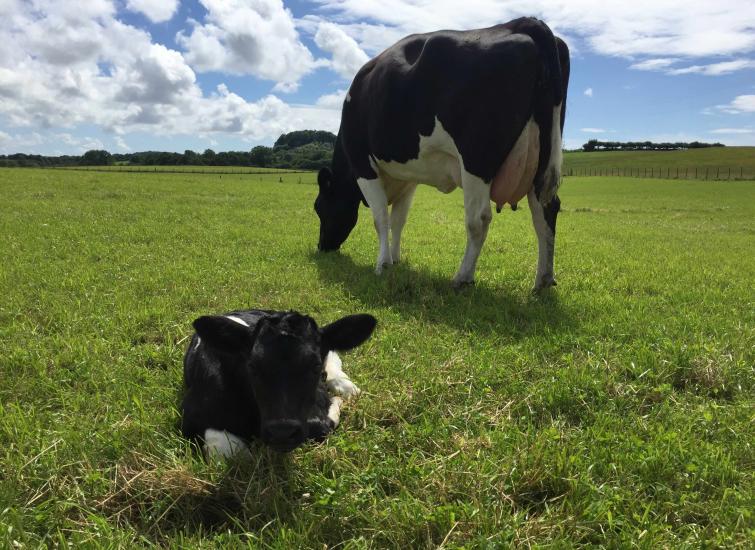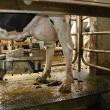Advanced Robot were the first company with a dedicated robotic division and were able to pull data out of the robots regularly to make improvements on farm.
Cow Touches: A New Focus for Transition Management
Will Tulley, MRCVS, Head of Technical at Advanced Ruminant Nutrition discusses a novel approach to transition management and its impact on profitability.

Cow Touches
Traditionally, transition management in dairy farming has revolved around the cow, looking at a broadly nutritional approach, optimising the diet to enhance health, fertility, milk production, and overall lifetime performance. However, Will Tulley from Advanced Ruminant Nutrition, suggests a shift in focus from solely looking at the cow, towards a more holistic approach that prioritises the bottom line of a dairy business, whilst also optimising animal health.
It's an approach the team at Advanced Ruminant Nutrition are using with great success and includes a focus on reducing cow interventions or “cow touches” during the transition period, thereby minimising the number of human and medical interactions on a day-to-day basis.
Will Tulley comments, “One of the biggest bottlenecks we are seeing in UK dairies in recent years is a reduction in the availability of labour, as herd sizes are also increasing. It’s particularly evident that on many units, the availability of skilled and experienced labour is becoming the single biggest constraint on improving technical and financial performance from the dairy herd. If we don’t get the transition period right, quite often we see cow’s suffering from the effects of sub-clinical milk fever and related diseases. Sick cows must be taken out of the milking herd, and this has a massive effect on labour. Not only does this impact by taking away from time to do other things on the farm, but it also puts a burden on employees and owners, not to mention extra stress on the cow at what is already a hugely stressful time.”
It's estimated that treating a sick cow takes the same amount of time as caring for between 20 and 30 healthy animals – and this for a cow that is less productive and less likely to remain in the herd.
Will continues, “A sick cow during the transition period, doesn’t just mean the cost of a bolus or other medication, it’s the labour to take the cow out to the nursing pen, the time and attention to administer medication and to alter the diet. Often, additional time is incorporated into the milking routine for cows slow to move to the milking parlour. Furthermore, extra time is taken up by segregating milk from animals treated with products that have a milk withhold period. While the objective is to reintegrate the animal into the milking herd, inevitably, there are cows that fail to recover, resulting in a complete financial loss. Therefore, alongside the typical cow-related costs, incorporating labour allows us to gain insight into how poor transition management can truly impact the bottom line. It's imperative to adopt transition management practices that forecast and estimate the costs of both planned and unplanned treatments to enhance our understanding of the herd's response to fewer interventions.”
Reducing Interventions
“In order to reduce interventions with the herds we work with, we recommend using the calcium binder X-Zelit. It’s a simple system that is effective, improving animal health, fertility and ongoing production with minimal intervention.”
Vilofoss recently undertook a study on the number of human interventions that a cow requires over the transition period – so called “cow touches”. The study compared herds that used a mineral binder approach for transition, with herds using a DCAB diet; and then recorded the number of times cows required interventions, both planned and unplanned across the transition period.
Will comments, “The graph below clearly shows that while both aim to facilitate a smooth transition for the cows, X-Zelit stands out for its remarkable ability to reduce the number of cow touches during this critical phase. Unlike conventional methods that may require frequent interventions, X-Zelit minimises the need for hands-on management, thereby streamlining the transition process and cutting associated costs.”
“Clearly, if we can produce cows that transition without any intervention, we are reducing the stress on the cow at an already critical period, we are reducing input costs through labour and medical costs - reducing antibiotic and anti-inflammatory usage. We also know that through this method and a smooth transition, cows will then be healthier, more likely to see improved fertility and we know they go on to produce more milk in subsequent lactations. So, a method that reduces cow touches is good for transition.”
 The impact on robotic herds.
The impact on robotic herds.
Will comments, “The impact of poor transition is particularly evident in robotically milked herds, where the objective is for cows to autonomously seek out the milking robot from the start of lactation. Any disease that diminishes voluntary milking visits early in lactation can affect that animal's production throughout the entire lactation period. Additionally, the need to segregate animals for treatments or collecting them for the milking robots, can disrupt the routine of the entire milking herd, thereby affecting the behaviour and production of other animals within the group. By minimising interventions and reducing labour-intensive tasks, dairy farmers can optimise resource allocation and bolster operational efficiency. We really see this as a benefit, especially to our clients on robotic milking systems where they are already reducing interactions with the cow as they voluntarily engage with the milking robots. However, if transition is poor and cows are not going straight onto the robots, the additional time required can have a substantial impact. Furthermore, it poses challenges for freshly calved heifers, unfamiliar with the robot, as increased interventions limit opportunities for animals to exhibit their natural behaviour and swiftly adapt to the milking system. With less interventions we create a better environment for training heifers if they are fit and strong and well transitioned.”
“As the dairy industry continues to focus on sustainability, this shift in transition management practice is particularly important to the financial sustainability of our dairies. Minimising cow touches allows skilled staff to focus on planned herd management tasks. Prioritising cow health has always been at the forefront of our operations when supporting our farms – ultimately every farm manager is trying to achieve calving with minimum problems and minimum fuss - if we can also improve the viability of the business then it’s a win for farmer, staff, and cow.”
〈 BACK



